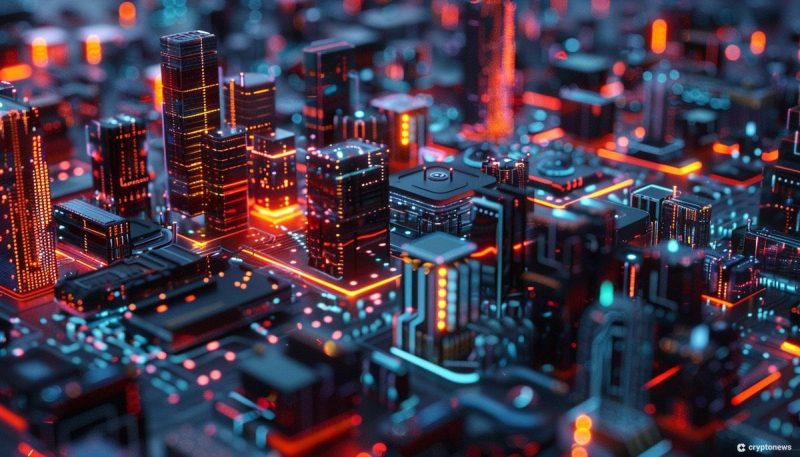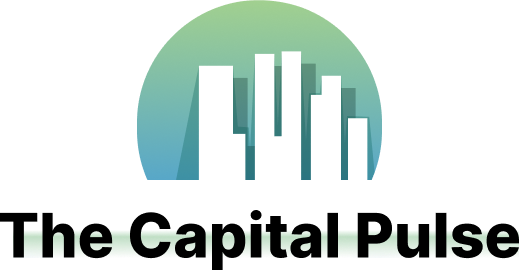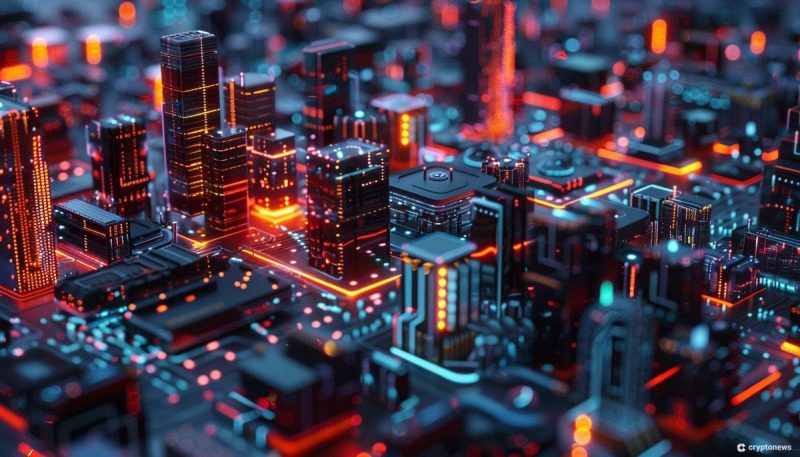
The tokenization of real-world assets (RWAs) may be the next “killer use case” for the crypto industry.
Investment bank Citi released a report in March 2023 showing that the market for RWAs is projected to reach $4 trillion to $5 trillion by the year 2030. The report notes that the potential for tokenization via blockchain is transformative, yet the technology is still not at the point of mass adoption. While this may be the case, industry experts believe that artificial intelligence (AI) solutions could push tokenized RWA use cases forward.
Understanding Tokenized RWAs
RWA tokenization has been a long-time concept and dates back to 2018 when security token offerings (STOs) were all the rage. Fortunately, today’s tokenized RWAs differ from previously seen STOs, which were largely unregulated.
Dave Hendricks, CEO and Co-founder of Vertalo, told Cryptonews that RWAs now have a degree of tangibility.
“If a custodian can’t hold on to the asset legally, and if it’s not considered a high-quality liquid asset by banks for international settlements, then some might not even consider that an RWA asset in the traditional sense,” explained Hendricks.
The Struggle Is Real…IMO RWA are real, hard assets and those would include anything that could be considered HQLA 1 or 2 under BIS’s Basel III, but not limited to those.
Custodians hold all kinds of physical and non-physical assets. So my definition considers and includes Art…
— Dave Hendricks (@davehendricks) May 7, 2024
Hendricks added that Vertalo – a digital transfer agent and enterprise software platform – has been tokenizing RWAs since 2018. According to Hendricks, tokenization use cases are an important part of the decentralized finance (DeFi) ecosystem.
He noted that use cases like stablecoins differ from tokenizing valuable and scarce assets like art, diamonds, or real estate.
“Assets like art, diamonds or even real estate can now be fractionalized via tokenization,” said Hendricks. “Investors can now own part of that asset and receive income from the lease or use of the asset. When you tokenize an asset, each token represents a percentage of the asset.”
Benefits of Tokenized RWAs
While Hendricks pointed out that tokenizing RWAs makes assets more easily tradable, he noted that a tangible benefit of tokenized RWAs lies in their transparency and mid/back-office applications within the traditional asset management function.
“This is why we are now seeing large financial institutions looking at improving asset management functions using distributed ledger technology,” he said.
This appears to be the case, as the world’s largest asset manager, Blackrock, recently led a $47 million funding round for Securitize. The company focuses on bringing physical and traditional financial assets onto the blockchain.
Payments giant Mastercard also announced on Wednesday that it will test new distributed ledger technology to enable tokenized asset settlement between its entities. In a May 8 statement, Mastercard said the project is focused on increasing the efficiency of cross-border settlements and reducing the chance of error and fraud.
How AI Can Help Tokenized RWA Use Cases
While it’s notable that the tokenization of RWAs is gaining traction, industry experts believe that AI will help advance use cases.
Meysam Alizadeh, Senior Researcher at the Digital Democracy Lab at University of Zurich and CEO of Coinfident, told Cryptonews that AI can help with RWA token trades.
For example, Alizadeh mentioned that AI can enable asset value prediction.
“Imagine a venture capitalist (VC) that manages multiple startups and RWAs and uses them to back a token,” said Alizadeh. “In this case, given the availability of a VC’s portfolio, AI can be used to predict the future values of its assets and RWAs of its startups, or to predict demand for their services.”
Alizadeh added that this can help traders have a better understanding of the future valuation of a VC’s portfolio.
“This could result in a better valuation of its RWA token,” he said.
Using AI for Predictive Pricing of RWAs
To put this in perspective, Jacques Voorhees – CEO and Founder of tokenization platform RealCap – told Cryptonews that RealCap would soon be using AI to help determine the price of RWAs.
Voorhees explained that RealCap initially began tokenizing diamonds but noted that the platform now helps tokenize rare artwork and other unique assets.
“When we started with diamonds, we didn’t need to use AI for price predictions,” said Voorhees. “But once RealCap began tokenizing RWAs with less available pricing information, we realized we needed an AI solution to help determine prices.”
Voorhees elaborated that RealCap recently created a technology called “virtual fungibility,” allowing tokenized RWAs to be more tradable with reduced price discrepancies.
Yet he noted that virtual fungibility requires AI to determine the price of certain RWAs.
“Let’s say an investor wants to buy art,” he said. “They can go online to different galleries, but an investor still may not know what the best price is for a piece of art. You need an objective measure. AI can help with predicative prices of each piece of art in this instance.”
RealCap is currently building and developing its AI solution to ensure predictive pricing.
Using AI To Streamline RWA Workflows
Alizadeh further noted that AI could be applied to automate RWA workflow analysis.
“One of the risks of RWA tokenization is smart contract bugs and vulnerabilities,” he said. “AI can help in two ways here – the technology can help to create reliable smart contracts, to streamline contract reviews and to detect potential bugs and compliance issues.”
Natalia Karayaneva, CEO and Founder of Propy, told Cryptonews that Propy is using AI for this particular case.
Propy has been tokenizing real estate since 2018 and has conducted over $4 billion in transactions across the United States. According to Karayaneva, Propy recently began using AI to streamline transaction timelines automatically.
“Propy AI can read purchase agreements, create transaction trackers, and settle intelligent deadlines for deposits, loan approvals, and more,” said Karayaneva. “This level of automation ensures a smoother, secure, and more transparent property investment process, which is crucial as we integrate more into tokenized markets.”
Alizadeh elaborated that AI is being applied for customer risk analysis for platforms like Propy and other tokenized RWA lending outlets.
“AI can be used to evaluate the credibility of the borrower, taking into consideration the borrower’s past on-chain transactions and activities,” he said. “This is similar to the credit scoring system in the US, which banks use to evaluate the risk of the customers.”
Challenges Associated with Tokenized RWAs and AI
While AI will likely advance tokenized RWA use cases, Alizadeh warned that challenges may hamper adoption.
For instance, he pointed out that data around the AI applications mentioned may not be easily accessible.
“AI needs data to work, and limited data access decreases AI usability,” he said.
Alizadeh further remarked that decentralized exchange users may not be required to undergo Know Your Customer (KYC) procedures. This may result in a lack of information about a user’s demographic and location, impacting a customer risk assessment AI model.
“Another data access challenge is getting all on-chain transactions of a user,” added Alizadeh. “Since everyone can hold multiple wallets and the identity of wallet holders is not easily verifiable, it’s not easy to get all on-chain transaction history of a crypto user. Most of the solutions to these challenges may be in conflict with users’ privacy and need more research to overcome.”
Tokenization Challenges Beyond AI
AI aside, Alizadeh believes that the primary challenges associated with tokenized RWAs are regulatory issues and asset verification.
“Tokenizing an asset, such as a building, could turn them into securities, potentially attracting strict regulatory scrutiny,” Alizadeh mentioned. “This would likely decrease the incentives of RWA tokens.”
He added that the verifiable authenticity of the assets underpinning RWA tokens remains problematic.
“Crypto traders often express skepticism about the validity of claims concerning a token’s real-world backing asset,” he remarked.
With these challenges in mind, Hendricks explained that tokenized RWAs must be carefully structured to be successful.
For example, he noted that most tokenized RWAs in DeFi are debt or loan instruments.
“Many if not most RWA offerings are just loans where investors put in collateral and get paid back an interest rate,” Hendricks said. “This is very lightly regulated and anyone can participate in this model. However, there may be recourse if collateral is lost and value declines.”
Hendricks added that a security can be created from a tokenized RWA if the underlying asset has a secured interest.
“For example, if a startup is raising money to buy an asset and fractionalize it under Reg D requirements, it can generally be sold to accredited investors,” he said. “You would then have to go through KYC and AML procedures, which would create a significant speed bump. RWA by itself doesn’t solve this, unfortunately.”
The post AI Solutions Seek To Advance Real World Asset Tokenization appeared first on Cryptonews.

